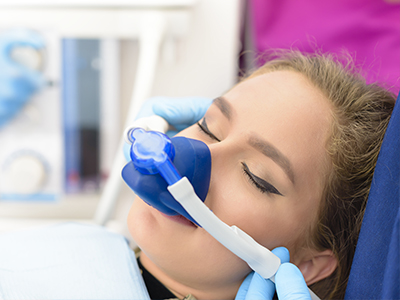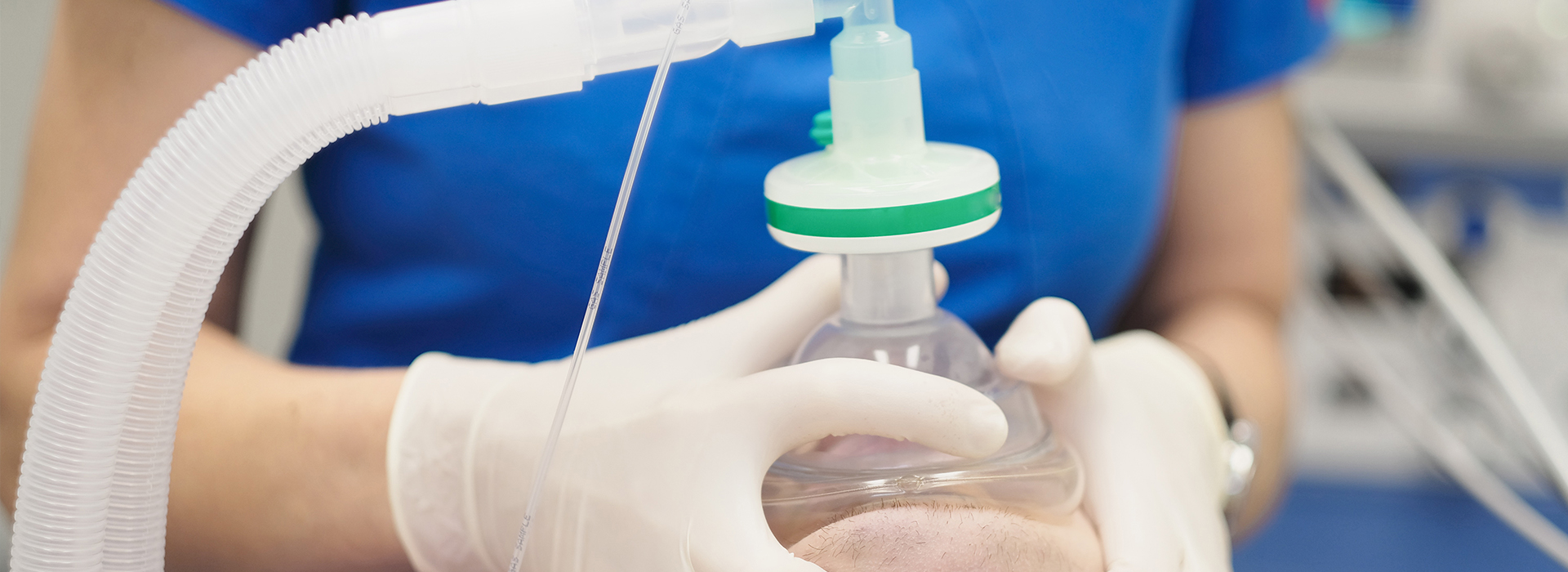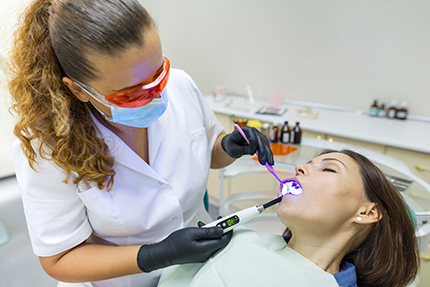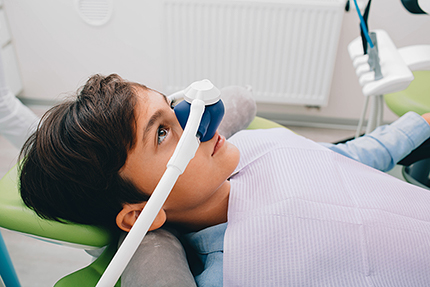
Our Office
8-10 Saddle River Road
Fair Lawn, NJ 07410
Existing Patients: (201) 797-8711
New Patients: (201) 479-0901
Visit Us Online

Dental anxiety affects an estimated 30 to 40 million people in the United States. If you avoid dental visits because of nervousness or fear, you are far from alone. Our practice prioritizes patient comfort and offers proven, monitored sedation options so that essential dental care is accessible and manageable for people who would otherwise delay or skip treatment.
When anxiety stands between someone and good oral health, problems compound: minor issues can become more complex, checkups get postponed, and overall well-being can suffer. Sedation dentistry provides a safe pathway for patients to complete the care they need with minimal stress, helping maintain long-term oral health without the emotional toll of dread or panic.
We tailor sedation to each individual’s medical background and the scope of treatment, combining local anesthesia with an appropriate level of sedation so procedures are comfortable and efficient. Our goal is to remove fear as a barrier to care, leaving patients calm, cooperative, and confident about returning for routine visits.
Sedation dentistry is not a one-size-fits-all solution. It’s a suite of techniques designed to reduce anxiety, minimize memory of an appointment, and improve tolerance for dental procedures. For many people, the presence of a predictable and controlled sedation plan turns an intimidating experience into something tolerable — or even comfortable.
By combining sedation with targeted local anesthesia, clinicians address both the emotional and physical aspects of dental treatment: patients feel relaxed and are shielded from pain or uncomfortable sensations. This dual approach supports smoother appointments, better cooperation during complex procedures, and less post-appointment stress for anxious patients.
Another benefit of sedation is the ability to consolidate care. When appropriate, sedation makes it easier to complete more work in a single visit, which can be helpful for patients who have difficulty scheduling frequent dental appointments or who find longer visits more manageable when anxiety is under control.
Individuals decide to pursue sedation for many reasons, and often several factors overlap. Some patients have a longstanding dental phobia that began after a painful childhood experience; others may be nervous only about specific treatments such as extractions or root canals. Sedation offers a reliable way to reduce fear and make necessary dentistry possible.
Practical considerations also play a role. Extensive restorative work or complex surgical procedures can require long chair time — something many patients find difficult to tolerate without additional support. Sedation helps these appointments pass more comfortably, enabling clinicians to work efficiently while the patient remains relaxed.
Patients with physical sensitivities — for example a powerful gag reflex or hypersensitive teeth and gums — often find routine care easier under sedation. Likewise, young children, individuals with special needs, or those who have trouble sitting still for lengthy treatments frequently benefit from a carefully managed sedation plan.

Dental phobia – Sedation provides an alternative path to care for patients whose fear of the dental environment prevents them from receiving routine or necessary treatments.
Anxiety about a particular procedure – When a single type of treatment causes significant stress, sedation can make that appointment manageable and less traumatic.
Extensive dental work – For comprehensive restorative or surgical visits that would otherwise require multiple appointments, sedation can improve comfort and shorten the perceived length of the visit.
Strong gag reflex – Sedation can reduce involuntary reflexes that complicate dental care, allowing treatment to proceed smoothly and safely.
Sensitivity to stimuli – Patients who find the sights, sounds, and sensations of dental instruments intolerable often experience greater ease and less stress with sedation.
Challenges sitting for care – Children, patients with cognitive or physical disabilities, or those with certain medical conditions can receive necessary treatment more comfortably with sedation in place.

Sedation options range from mild anxiolytics that keep you fully awake to deeper levels that produce little memory of the appointment. The right option depends on a patient’s medical history, anxiety level, the complexity of treatment, and other individualized factors. We discuss the possible approaches and help patients make informed decisions before any procedure begins.
It’s useful to distinguish between office-based conscious sedation and hospital-based general anesthesia. Conscious sedation keeps patients relaxed and responsive to verbal prompts while preserving protective airway reflexes — a safe and common choice for many dental procedures. General anesthesia involves deeper, monitored sleep and is typically provided in a hospital setting when medically necessary.
Before recommending any sedative option, clinicians evaluate medical history, current medications, airway considerations, and any other risk factors. Safety, monitoring, and a clear plan for aftercare are always central to the decision-making process.
Conscious sedation produces a state of calm and reduced awareness while patients remain able to follow simple instructions and breathe spontaneously. This level of sedation is commonly used in dental offices because it balances comfort with safety and allows the clinician to maintain communication as needed.
Deep sedation and general anesthesia result in a greater loss of responsiveness and typically require advanced monitoring and airway management. These techniques are reserved for situations where other forms of sedation are insufficient or when a patient’s medical needs call for an anesthesiologist to be involved.
In a dental office setting we offer several methods of conscious sedation that can be adjusted to a patient’s needs. The chosen approach, along with local anesthesia, creates a predictable environment in which the dental team can deliver quality care without undue stress for the patient.
Our team explains each method, answers questions about what to expect during and after the appointment, and reviews any necessary pre-visit instructions to maximize safety and comfort.
Nitrous oxide is a mild, fast-acting sedative inhaled through a small mask; it reduces anxiety and helps many patients relax without producing deep sleep. Effects wear off quickly after the gas is turned off, allowing patients to recover rapidly and often resume normal activities soon after the appointment.
Oral sedation involves a prescribed medication taken prior to the visit to ease anxiety and promote relaxation. The experience ranges from mild calming to deeper drowsiness, depending on the drug and dose selected. For safety, patients receiving oral sedatives typically need someone to accompany them to and from the appointment.
Intravenous sedation begins quickly and can be titrated throughout a procedure to maintain the desired level of relaxation. IV sedation can be especially helpful for extensive treatment or for patients who require a more controlled and adjustable sedative effect. Specific pre-appointment instructions — such as fasting — are necessary for IV sedation, and an escort will be required to drive the patient home after the visit.
A safe sedation experience begins before you arrive. Expect a thorough medical review that covers current medications, past reactions to sedatives or anesthesia, allergies, and any relevant medical conditions. Honest, detailed information helps the care team select the safest and most effective approach.
Depending on the method chosen, you may receive instructions about eating and drinking before the appointment, and you should arrange for a responsible adult to accompany you home if necessary. On the day of treatment, the team will review the plan with you, confirm monitoring devices are in place, and answer any last-minute questions.
After sedation, recovery is individualized: mild techniques like nitrous oxide typically allow a quick return to normal activity, while oral and IV sedation take longer to wear off and may require rest for the remainder of the day. Follow-up instructions will cover post-treatment comfort, any temporary restrictions, and how to recognize and report unusual symptoms.
Your safety and comfort remain the top priorities throughout the entire process. We maintain monitoring standards and have protocols in place to manage any situation that could arise, ensuring sedation supports successful care rather than complicating it.
If fear or physical sensitivity has kept you from getting dental care, discussing sedation options is the first step toward reclaiming a healthier smile. A clear conversation about medical history, the planned procedure, and realistic expectations will help determine the right approach for your needs.
At Stahl Dental Studio, our team emphasizes careful planning, open communication, and evidence-based practices. We help patients understand the benefits and limitations of each sedation method and ensure every appointment is conducted with close monitoring and professional oversight.
To learn more about how sedation dentistry could make your next visit easier, please contact us for additional information. We’re happy to explain options and help you take the next step toward comfortable, complete dental care.
Sedation dentistry uses medications to help patients relax during dental procedures so they can receive needed care with less stress. These medications are provided in controlled doses and are combined with local anesthesia to manage pain at the treatment site. The goal is to reduce anxiety and discomfort while maintaining safe, monitored conditions throughout the appointment.
Levels of sedation range from mild relaxation with rapid recovery to deeper, controllable sedation for more extensive work. The dental team tailors the approach to each patient based on medical history, anxiety level, and the complexity of the procedure. Clear communication before treatment ensures patients understand how sedation will affect awareness and memory of the visit.
Patients who experience dental anxiety, have avoided care because of fear, or have a powerful gag reflex are common candidates for sedation. People with hypersensitive teeth or gums, those who require lengthy or complex procedures, and children or patients with special needs who cannot sit comfortably for care may also benefit. Candidacy is determined by evaluating the patient's dental needs, medical history, and ability to follow pre- and post-procedure instructions.
A consultation and medical review help identify potential risks, medication interactions, and any conditions that could affect sedation safety. Age, pregnancy status, respiratory issues, and prior reactions to sedatives are taken into account when recommending an option. The dentist will explain appropriate choices and any pre-appointment preparations needed to reduce risk.
Common office-based sedation methods include inhalation sedation with nitrous oxide, oral sedatives taken before an appointment, and intravenous (IV) sedation administered during treatment. Nitrous oxide provides mild relaxation and wears off quickly, making it useful for short procedures and patients with moderate anxiety. Oral sedatives are prescribed to produce deeper relaxation and require that patients have an escort to and from the appointment.
IV sedation allows precise control over the depth of sedation and is suited for longer or more complex procedures because it can be adjusted in real time. All conscious sedation methods are paired with local anesthesia so the procedure site remains numb and pain-free. The dental team will review preparation steps, including any fasting guidelines, and provide post-treatment instructions tailored to the chosen method.
Conscious sedation keeps patients relaxed while they remain responsive to verbal cues and maintain independent breathing, whereas general anesthesia produces a state of complete unconsciousness. Conscious techniques reduce awareness and anxiety without suppressing spontaneous respiration, and patients often have limited or no memory of the procedure. General anesthesia requires airway support and is typically administered by an anesthesiologist in a hospital setting for cases that cannot be managed safely in the dental office.
Most dental treatments that require sedation can be managed with conscious techniques performed in the office under careful monitoring. General anesthesia is reserved for select clinical scenarios, such as extensive surgery or when other sedation approaches are contraindicated. Your dentist will discuss the reasons for recommending one approach over another based on safety and procedural needs.
When administered by trained clinical staff and selected after a thorough medical review, sedation dentistry has a strong safety record. Dental teams follow established monitoring protocols for vital signs, oxygenation, and airway status throughout treatment to maintain patient safety. Pre-appointment screening identifies risk factors and guides the selection of the safest sedation option for each individual.
It is important for patients to disclose all medications, supplements, and health conditions prior to receiving sedation so potential interactions can be avoided. Recovery instructions and post-procedure monitoring help minimize complications and ensure a safe return to normal activities. If concerns arise, the dental team will consult with medical providers or recommend hospital-based anesthesia when appropriate.
Recovery varies by the type and depth of sedation used: nitrous oxide dissipates rapidly, while oral or IV sedatives may produce grogginess for several hours. Immediately after treatment, you will be monitored until vital signs are stable and you are alert enough for discharge, and an escort is required when deeper sedatives are used. The dental team will provide specific instructions about activity restrictions, driving, and when to resume normal routines.
Mild side effects such as drowsiness, dry mouth, or lightheadedness are common and generally resolve within a day. Follow-up guidance will include signs that warrant medical attention, such as prolonged breathing difficulty, persistent vomiting, or excessive drowsiness. Clear recovery instructions help ensure a smooth and safe return to normal function.
Selecting the appropriate sedation method begins with a comprehensive consultation that reviews your dental needs, prior experiences with anxiety or sedatives, and your overall health history. The dentist assesses the expected procedure length and complexity along with any airway, respiratory, or cardiac considerations that could influence safety. Together you will discuss the goals of sedation, practical aspects of recovery, and any necessary preparations such as fasting or medication adjustments.
At Stahl Dental Studio, recommendations are individualized so patients understand how each option affects comfort and awareness and can make an informed decision. The team outlines monitoring protocols and post-procedure care to minimize risk and support recovery. When necessary, care is coordinated with your physician to address complex medical issues before proceeding with sedation.
Under conscious sedation most patients remain able to follow simple verbal instructions and respond to stimuli, yet experience reduced awareness of the procedure. Local anesthesia is used in conjunction with sedation to block pain at the treatment site, so patients should not feel the dental work. Memory of the appointment varies by sedation depth; some people have little or no recall while others retain partial memories.
If a deeper level of sedation is indicated to limit awareness, the dental team explains how monitoring and responsiveness differ from lighter approaches. Safety measures ensure breathing and cardiovascular function are maintained, and staff are prepared to manage the airway if needed. Comfort and pain control are continuously evaluated throughout the procedure so adjustments can be made as required.
Certain medical conditions—such as uncontrolled cardiac disease, severe respiratory disorders, sleep apnea, and some neurologic conditions—can affect sedation risk and influence which methods are appropriate. Prescription medications, over-the-counter drugs, herbal supplements, and recent alcohol use can interact with sedatives and may require temporary adjustment or special precautions. Pregnancy and breastfeeding also influence candidacy for many forms of sedation and should be disclosed during consultation.
Prior to any sedated appointment the dental team will review your complete medical history and current medications to identify interactions and plan safe care. In some situations the dentist will consult with your physician to coordinate medication management or obtain medical clearance. Full disclosure and open communication help ensure the team selects a sedation approach that maintains safety and effectiveness.
Stahl Dental Studio emphasizes patient-centered sedation care by combining clinical experience with modern monitoring equipment and evidence-based protocols. The team focuses on individualized planning, careful screening, and clear communication so patients understand risks, benefits, and recovery expectations. This approach supports safe, comfortable treatment experiences for patients who struggle with anxiety or require more extensive dental work.
The practice serves the Fair Lawn community with attention to detail and a willingness to coordinate care with medical specialists when needed for complex health concerns. If sedation is recommended, you will receive specific pre-appointment instructions and post-procedure support to help ensure a smooth recovery. Schedule a consultation to review your medical history and determine whether sedation is appropriate for your dental needs.
